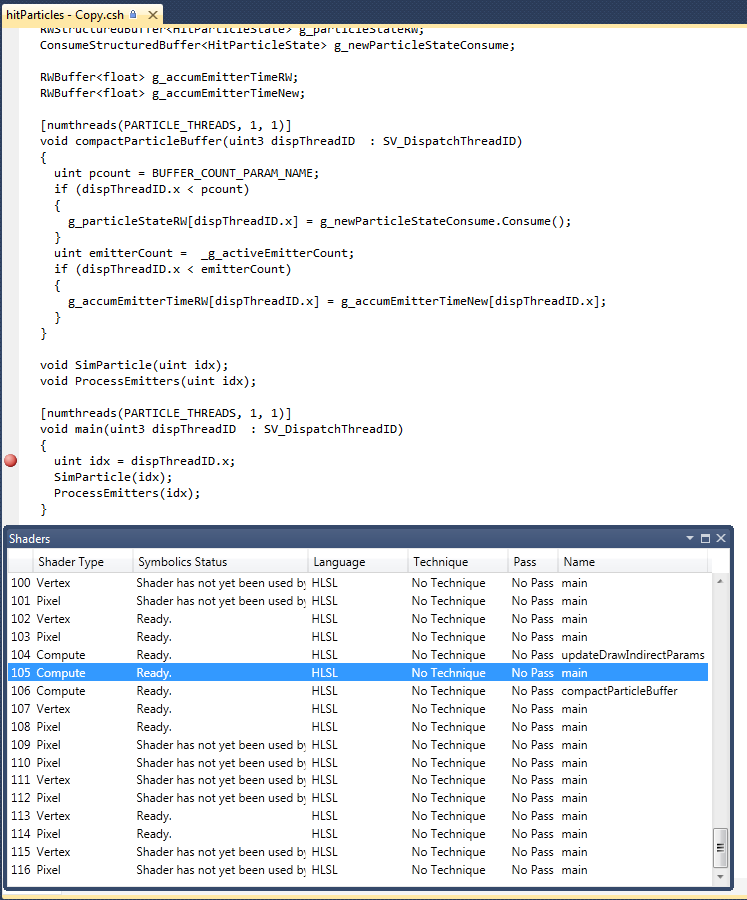To set a breakpoint in a shader:
- Access the Shader Debugger.
- To see the source code of a specific shader, double-click on a row in the Shaders window. The document window opens, showing the corresponding source code.
- In the Text Editor window, move the insertion point to the line where you want the application to break.
To set a breakpoint in a statement that spans two or more lines, move the insertion point to the last line of the statement.
- From the Debug menu, choose Toggle Breakpoint.
Optionally, press the F9 key, or left-click in the left margin of the source code document.

- If you wish, you can also set the breakpoint as a conditional breakpoint.
- Right-click on the breakpoint icon in the left margin of the source code document, or on the entry in the "Breakpoints" window, to open the Breakpoint Options dialog box.
- Select Conditional.
The Conditional Breakpoint dialog box opens. - Type the expression to evaluate.
- Click OK.
See below for more information on setting breakpoints in shaders.
Conditional Breakpoints in Shaders
A conditional breakpoint expression can be any HLSL expression that evaluates to a Boolean result. All (scalar) operations (+, -, *, <, >, <=, ==, ., [], type casts, swizzles … ) on local variables, global variables, and pseudo-variables (intrinsic variables) are allowed.
Limitations
Be aware of the following limitations in expressions for conditional breakpoints:
- Preprocessor macros are not supported.
- Only scalar expressions are supported, vector or matrix expressions are not.
- HLSL built-in functions are not supported.
- Integer division or modulus in the expression is not supported.
- Assignment expressions and operators with side-effects, such as pre-increment or post-increment, are not supported.
- Implicit and explicit casts to/from double are not supported.
- The double data type is not supported in breakpoint expressions.
- Groupshared variables and shader model5 buffer objects cannot be used in breakpoint conditions.
Additional Intrinsic Variables
There are additional intrinsic variables that you can use, depending on the kind of shader you are debugging:
| Shader |
can use the following variables in expressions... |
| Vertex Shader |
uint @vertexId
uint @instanceId
uint @drawCallId |
| Geometry Shader |
uint @primitiveId
uint @drawCallId |
| Pixel Shader |
float3 @pixel
uint @sampleId
uint @drawCallId |
| Compute Shader |
uint3 @groupThreadId
uint3 @groupId
uint @dispatchId
|
| Hull Shader |
uint @controlPointId
uint @drawCallId |
| Domain Shader |
uint @domainPointId
uint @drawCallId |
The following macros are also supported in Compute Shaders:
#define @GroupIdx(X, Y, Z) (@groupId.x == X && @groupId.y == Y && @groupId.z == Z)
#define @ThreadIdx(X, Y, Z) (@groupThreadId.x == X && @groupThreadId.y == Y && @groupThreadId.z == Z)
| NVIDIA® Nsight™ Development Platform, Visual Studio Edition User Guide Rev. 2.2.120522 ©2009-2012. NVIDIA Corporation. All Rights Reserved.
|
|
| |
|
